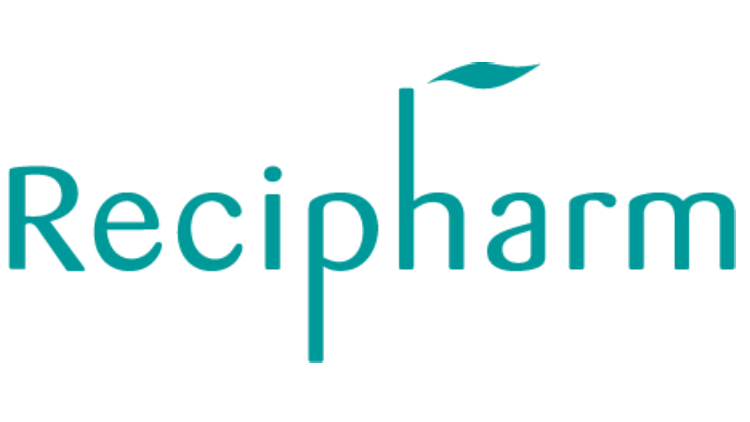Promotional Features
Take steps to stay in the serialization race
The introduction of serialization requirements across Europe creates a number of challenges for the pharmaceutical industry. From early 2019, all medicines in the EU must be serialized, as part of an industry-wide aim to eliminate counterfeit and falsified medicines from the supply chain, protect brand reputation and ultimately improve patient safety.
Preparing for the introduction of serialization requirements has the potential to be a complex and time consuming process. Those who fall behind in their preparations risk serious disruption to their supply chain, with the worst case scenario being they are unable to sell their products in Europe. Staffan Widengren, Director corporate projects at contract development and manufacturing organisation (CDMO) Recipharm, discusses some of the main considerations when preparing for serialization and gives some advice to help pharmaceutical organisations achieve compliance.
The widespread risk of falsified medicines
According to the World Health Organisation (WHO), falsified medicines account for between 7-15 per cent of all medicines circulated in developed countries and a huge 30 to 40 per cent in developing countries. As falsifications become more sophisticated and widespread, the risk that falsified medicines will reach patients in the EU increases every year.
The Falsified Medicines Directive (FMD) Safety Features Delegated Regulation aims to limit this risk by making the serialization of licensed drug products a legal requirement for companies in the EU. There are a number of factors to consider when introducing serialization processes.
1. Consider legislative complexities
Several countries including Turkey, Brazil, China and Korea already have their own regulations requiring different forms of serialization. Several others have pending requirements, including the EU, US, Saudi Arabia and Taiwan. Navigating the complex regulatory landscape and understanding geographical variations poses a potential challenge. It’s important to consider the markets that you supply to and the impact that this will have on your serialization requirements.
For example, all countries that serialize products require unique pack information in both human readable format and in some form of data matrix or barcode. However, there are specific requirements relating to randomised or pre-decided serial numbers and whether linear barcodes or 2D matrices are needed.
2. Map out your requirements
Many companies have specific requirements for printing techniques and tamper evidence. For example, a serialized carton around a blister card would be of no use if you can tamper with the carton and replace the original drug with a counterfeit one. Will you require security seals or labels, foil or glued cartons? These are just some factors to consider. Take time to think about whether a standard solution including features such as thermal inkjet printing, verification of 2D matrix code, human readable text, brand neutral tamper evident labelling and the creation of a standard file format for reporting and storing serial numbers is sufficient. You may find you need additional components such as aggregation, alternative printing techniques and non-standard data formats. You should also consider whether the serial numbers will be generated in-house of externally. Experienced CMOs with serialization capabilities can help guide this process.
3. Pay attention to timeframes
Meeting the tight timescales for implementation is a growing cause of concern within the industry. While the 2019 deadline is three years away, the European Stakeholder Model (ESM) suggests that four to five years is a more realistic timeframe. This poses a major risk to the industry, as companies that fail to be ready for the changes will face major disruption to business operations. It is time to put serialization on your agenda and face the challenge head on. CMOs that make serialization a priority can help shorten these timeframes using their existing capabilities and expertise.
4. Limit your investment
The industry is currently focused on establishing the hardware and software infrastructure needed to serialize drug products. For many, this can mean a large upfront investment. While larger manufacturers may have the resources to deal with the financial demands of serialization, smaller and medium sized organisations may need to rely on outsourced services to eliminate financial burden and upfront costs. Speak to your CMO as early as possible to understand the timing and cost implications for introducing the process into your product supply chain. Many companies are choosing to knock serialization down the priority list as it’s still a few years away but better planning is likely to deliver great cost savings.
5. Consider the full drug lifecycle
Ensuring that security is maintained from the production and packaging stages through to the purchase of medicines by the end of consumer, involves a number of parties within the pharmaceutical supply chain, including manufacturers and suppliers of active pharmaceutical ingredients (APIs) and finished products, as well as those in marketing and packaging design and dispensary. It’s important to consider where you fit in this supply chain and how you will work through the process.
6. Look to the future
While the current priority is to introduce and configure serialization processes in time for the looming EU deadline, it’s important not to forget how serialization may impact your productivity going forward. Evidence from early adopters of serialization processes suggests that productivity, also known as overall equipment effectiveness (OEE), can go down by as much as 10 per cent. Assessing potential issues and planning for them before they happen, will be key to avoiding inefficiencies and disruption. It is extremely important to map out your internal business process from purchase of material through to the delivery of finished goods to find out where and how serialization will affect your operations. This will allow you to adapt your procedures accordingly.
Author biography
Staffan Widengren, Director Corporate Projects at Recipharm is Programme Manager for the Recipharm global serialization project and part of a global steering committee that is working closely with clients in Europe to ensure they plan and implement changes that comply with pending regulatory requirements for drug serialization. Staffan has been working as Quality Director/ Qualified Person and General Manager within Recipharm since 2002 and in June 2015 assumed the role of Programme Manager for Recipharm’s global programme for serialization. Recipharm has worked with clients in Asia on track and traceability, already providing serialized products in markets including Turkey, Korea and China. The company is investing €40m over the next three years to enhance its serialization capabilities. Recipharm is preparing a range of educational papers aimed at training staff internally across its global network and supporting customers with the challenges of serialization, verification and complying with new regulatory requirements. For more information on Recipharm and its services, please visit www.recipharm.com


